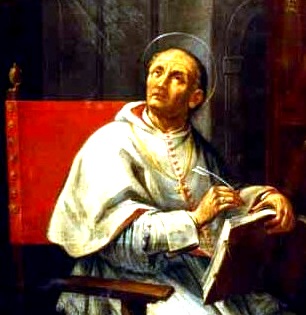
Peter Damian died on February 23, 1072, but not before beginning one of the strangest fads in Christian history. Damian, a Benedictine monk, advocated a life of extreme austerity. In denying worldly pleasures, he found it useful to whip himself, and he taught the practice to others. Monks began lashing themselves while reciting the Psalms. Each psalm was accompanied by 100 strokes with a leather strap to the bare back. The whole Psalter was good for an additional 1,500 strokes. It reenacted the suffering of Christ and of the martyrs, they thought, and served as an act of penance. Some monks flogged themselves to death for their own benefit and to release souls from purgatory.
Self-flagellation remained localized and limited to monasteries for two hundred years, but in the thirteenth century, it enflamed the masses. The Black Death was causing many people to believe the end of the world was near, and bands of flagellants appeared across Europe calling people to repentance. In the outbreak of 1259, great parades of thousands from all classes and of all ages marched through the streets stripped to their waists, carrying crosses and banners, singing hymns and scourging themselves.
The flagellant movement reignited repeatedly during the next two centuries, and the frenzy of 1349 exceeded all previous demonstrations. Bands of enthusiasts suddenly appeared in all areas of Europe. They marched from town to town, dressed in white, with red crosses on caps and mantles, singing hymns and carrying banners. They camped in public squares, and twice daily they bared themselves to the waist, fell to their knees and scourged themselves. Their whips with needle-pointed iron tips drew blood as they struck to the rhythmic music of hymns.
On October 20, 1349 self-flagellation was condemned by a papal bull, and rightly so. We can never pay for our sins by our own blood, however painfully shed. By his stripes we are healed. Our bodies are his temples to be guarded, not abused.
Flagellants were nevertheless seen in Rome as late as 1870, and even today there are isolated outbreaks.
He was wounded and crushed because of our sins; by taking our punishment, he made us completely well. All of us were like sheep that had wandered off. We had each gone our own way, but the Lord gave him the punishment we deserved. (Isaiah 53:5,6)
Robert J. Morgan, On This Day : 265 Amazing and Inspiring Stories About Saints, Martyrs & Heroes, electronic ed. (Nashville: Thomas Nelson Publishers, 2000, c1997). Oct.20.
ALSO ON THIS DAY
1625 – John Winthrop is elected governor of Massachusetts Bay. His journal became a treasure mine for historians.
1913 – Mary Lathbury, “the Saint of Chautauqua.” who wrote the hymns “Break Thou the Bread of Life” and “Day Is Dying in the West”, died.
1949 – The last of the Inklings’ Thursday meetings is held this evening. This group of Christians associated with Oxford included such notable thinkers as J.R.R. Tolkien, C. S. Lewis, and Owen Barfield.
[…] *I Could Only Imagine […]